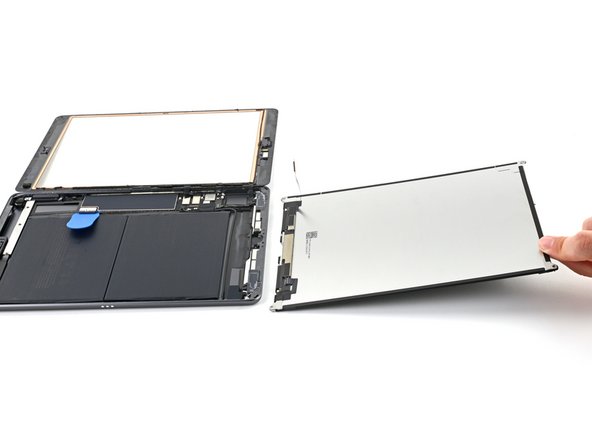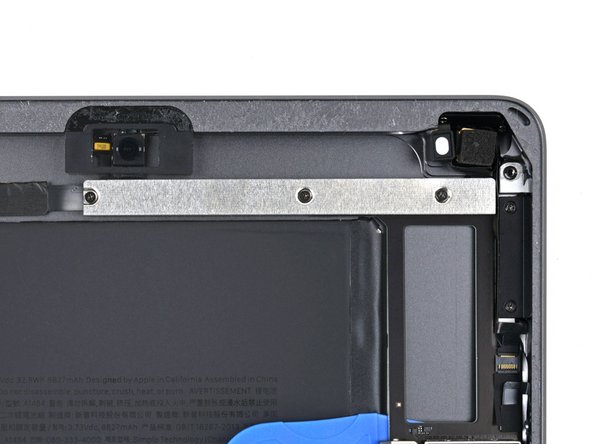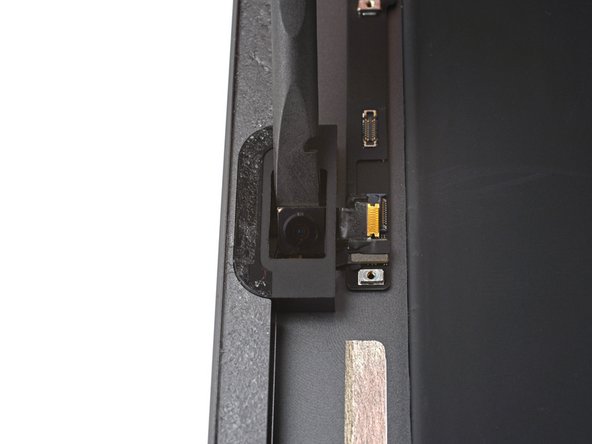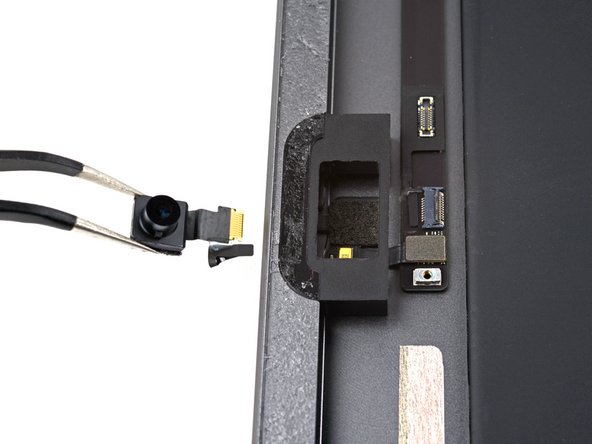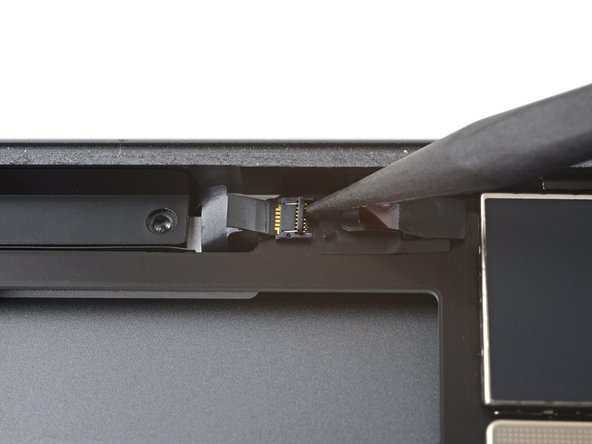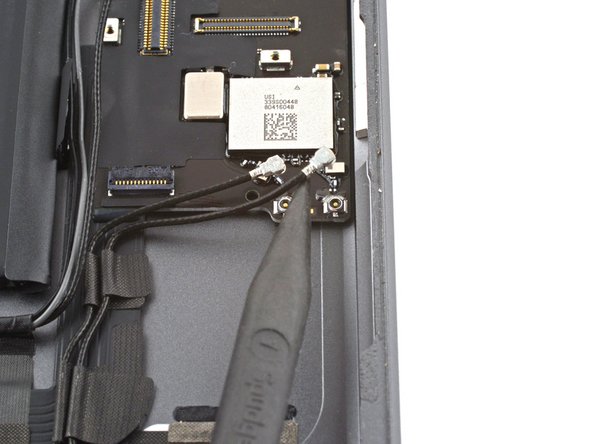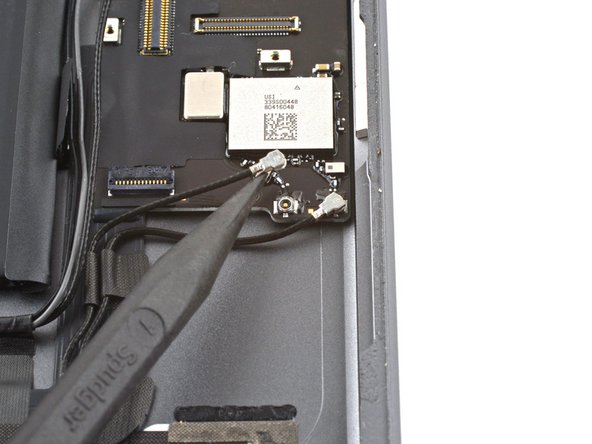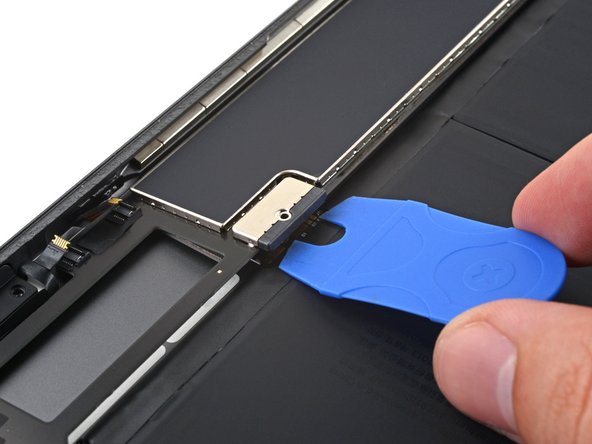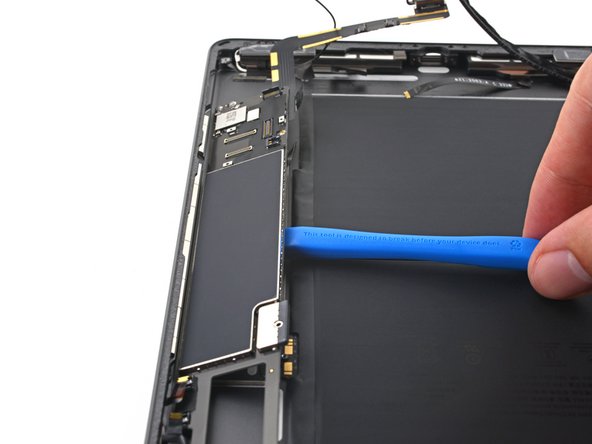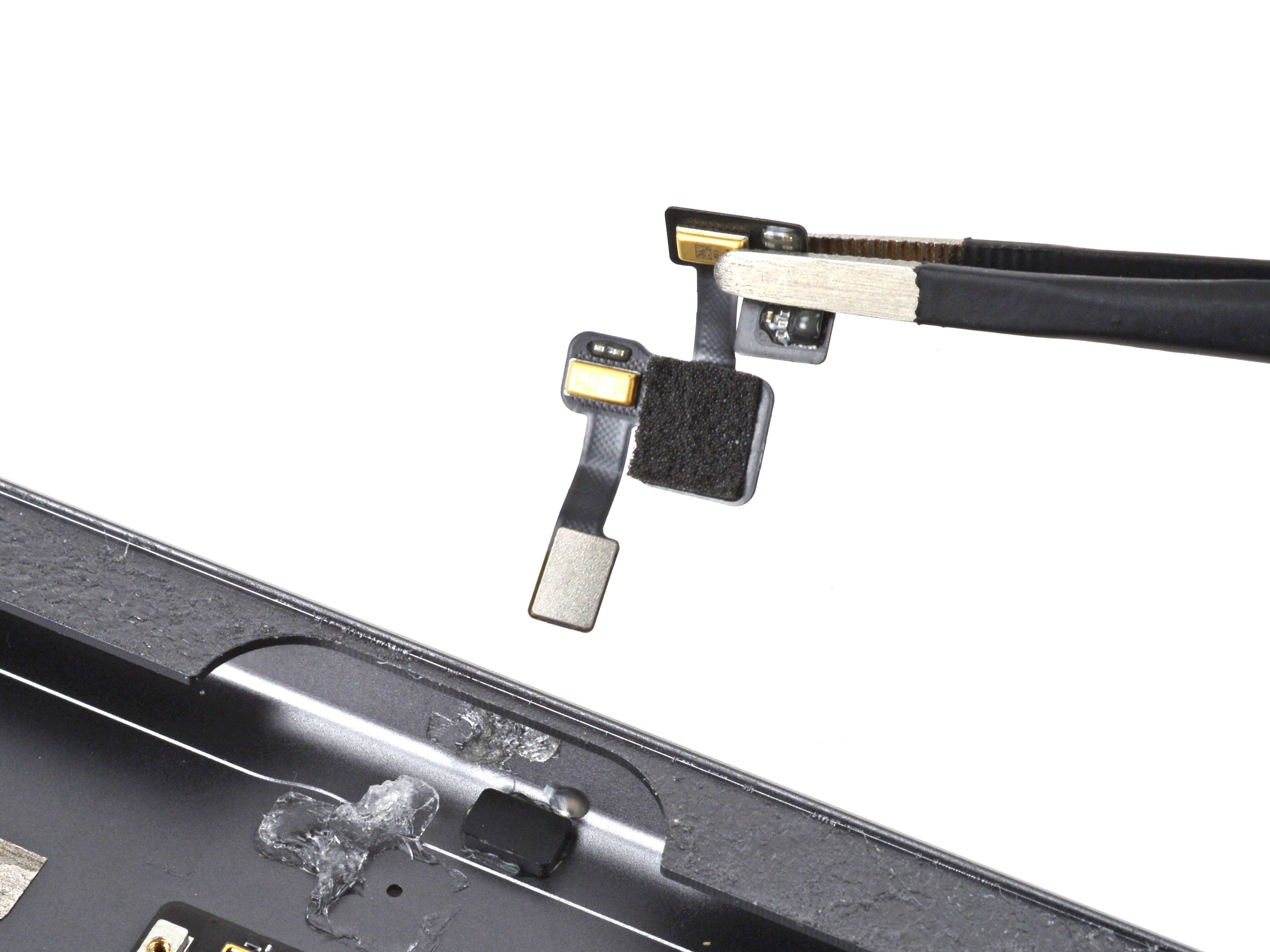iPad 9 Logic Board Replacement
Duration: 45 minutes
Steps: 88 Steps
For your own safety, make sure to drain the battery to below 25% before taking your iPad apart.
Heads up: the home button's Touch ID sensor is linked to the logic board. To keep Touch ID working, you'll need to transfer and glue the original home button onto the new front panel assembly.
Get ready to swap out the logic board in your iPad 9 Wi-Fi! Just a quick heads up—this guide is specifically for the Wi-Fi model, so if you have the LTE version, be sure to check that out separately. For everyone's safety, make sure your battery is below 25% before diving in; this way, we can avoid any fiery surprises if the battery gets a little too adventurous during the repair. If your battery is looking a bit puffy, take the necessary precautions! Remember, the home button’s Touch ID sensor is buddies with the logic board, so to keep that awesome Touch ID feature, you'll need to carefully transfer and glue your original home button onto the new front panel assembly. When isolating the battery, use a battery blocker with caution—those contacts can be fragile and easy to damage, which could lead to some serious issues. If you decide to skip isolating the battery, make sure to keep metal tools to a minimum unless absolutely necessary (like when removing screws) to avoid any accidental shorts or damage to sensitive components. Some images in this guide may show a different model with slight visual differences, but not to worry—they won't throw you off track for this procedure!
Step 1
Make sure to turn off your iPad before diving into the repair adventure!
- Warm up an iOpener and gently press it against the left edge of your iPad for a solid two minutes. This will soften things up, making the next steps a breeze!
Tools Used
Step 2
- While the adhesive is doing its thing and loosening up, keep an eye out for these parts that really dislike being poked around:
- Front camera
- Antennas
- Display cables
- Ambient light sensors
Step 3
In the next three steps, we’ll show you how to use the Anti-Clamp – a nifty tool we created to make opening your device a breeze. If you’re not using the Anti-Clamp, no worries! Just skip ahead three steps for another way to get the job done.
Need a little more guidance on how to use the Anti-Clamp? No problem – check out this detailed guide for all the tips.
Is your iPad feeling a little too slippery for the Anti-Clamp to grip? A quick fix – just add some tape to create a stickier surface, and you’re good to go!
- Slide the blue handle back to release the Anti-Clamp’s arms.
- Set something under your iPad so it sits nice and even between the suction cups.
- Place the suction cups near the center of the left edge—one up top, one down low.
- Keep the bottom of the Anti-Clamp steady and press down hard on the top cup to get a good seal.
Step 4
- Grab the blue handle and pull it forward to lock those arms in place.
- Give the handle a full 360-degree turn clockwise, or keep going until the suction cups start to stretch a bit.
- Keep an eye on the suction cups — they should stay perfectly aligned. If they start to slip, just loosen them a little and realign the arms before continuing.
Step 5
Don't overdo it—turn just half a twist at a time and take a breather for a minute between each one. Let the Anti-Clamp and patience work their magic.
Want the full scoop on using a hair dryer like a pro? Dive into this guide.
If the Anti-Clamp isn't opening up enough space, just warm things up a bit more and give the handle a half-turn clockwise.
- Take a breather for a minute to let the adhesive loosen up and create a nice little opening gap.
- If your screen isn't warming up as much as you'd like, feel free to give it a gentle blast of heat from a hair dryer along the left edge of the iPad.
- Slide an opening pick underneath the digitizer once the Anti-Clamp has worked its magic and made a big enough gap.
- You can skip the next step.
Step 6
Ready to get your iPad open? Start by using a suction handle. It's pretty easy once you've got the right grip!
If your display is in rough shape with cracks all over, try sticking a layer of clear packing tape on it first. This can help the suction cup stick better. If that doesn't work, you can go for some extra-strong tape or, in a pinch, superglue the suction cup directly to the screen. Don't worry—you're making progress!
- Once the screen feels nice and warm, place the suction handle near the left edge, as close to the side as possible.
- Gently lift the screen with the suction handle, creating a small gap between the digitizer and the frame.
- Slide an opening pick into the gap you've made, and carefully work it around to separate the digitizer from the frame.
Tools Used
Step 7
If you spot the opening pick poking through the digitizer, no sweat—just gently pull it out. The LCD should stay safe, but be careful not to leave behind any sticky adhesive messes that are a pain to clean up later.
- Pop in a second opening pick where you just made some space.
- Gently slide the pick over to the bottom-left corner of the iPad to break free from that sticky adhesive.
- Keep the pick snugly in the bottom-left corner to stop that adhesive from sticking back together.
Step 8
- If your opening pick is feeling a bit sticky in the adhesive, just give it a little 'roll' along the side of the iPad to keep that adhesive separation going strong.
Step 9
- Gently slide the first opening pick toward the top-left corner of your iPad to break that adhesive seal. You're doing great!
- Once you’ve got that pick in place, leave it there to keep the adhesive from sticking back together. Nice job!
Step 10
- Warm up an iOpener and stick it onto the top edge of your iPad for a cozy two minutes.
Tools Used
Step 11
- Gently twist that pick around the top-left corner of your iPad to break free the adhesive. You've got this!
Step 12
Steer clear of sliding the pick across the front camera – we wouldn't want to accidentally give that lens a makeover! Follow the steps below to keep things safe and sound.
- Gently glide the opening pick along the top edge of the iPad, but make sure to stop just shy of the front camera. You've got this!
Step 13
- Gently pull the pick out so that just the tip stays sandwiched between the digitizer and the frame.
- Slide the pick right over the front camera to carefully loosen that adhesive.
- Keep the pick resting near the right side of the front camera before moving on to the next step.
Step 14
- Slide the pick back in and gently move it towards the top-right corner of the iPad to completely break free that pesky adhesive.
- Keep the pick in that corner to stop the adhesive from sticking back together.
Step 15
- Warm up an iOpener and place it on the right edge of the iPad for a cozy two minutes.
Tools Used
Step 16
- Gently glide the pick around the top-right corner of the iPad to break that adhesive seal. You're doing great!
Step 17
The display cables hang out around the halfway point from the bottom of your iPad. Once you slide down, stop when you're about 3 inches from the bottom. You've got this!
- Grab a fresh opening pick and gently slide it into the middle of the iPad's right edge. You're on your way to a successful repair!
Step 18
- Warm up that iOpener and press it against the bottom edge of your iPad for a cozy two minutes.
Tools Used
Step 19
Be careful not to spin the pick all the way around the corner; it could lead to antenna trouble!
Check out the third image to spot the bottom-left antenna hanging out just beneath the digitizer.
- Gently slide the bottom-left pick into the corner to help break that adhesive bond. You've got this!
- Keep the pick snug in the corner while you gear up for the next step.
Step 20
Make sure to slide the pick gently toward the home button, not away from it, or you might accidentally mess with the antenna. Keep it cool and steady!
If you find yourself needing to slide that pick over this area once more, just pop it out and reinsert it from the bottom-left corner. You've got this!
- Pop in a brand new opening pick into the little gap you just made at the bottom edge of your iPad.
- Gently glide the pick over the antenna, but hold up just before you reach the home button.
- Keep that pick parked to the left of the home button as you move on to the next step.
Step 21
- Pop your opening pick into the gap you just made like a pro.
- Gently slide that pick under the home button and glide it toward the bottom-right corner, keeping just the tip tucked between the digitizer and the frame.
Step 22
Remember, slide that pick towards the home button like it's your best buddy, and steer clear of the other direction! Going the wrong way could lead to some antenna drama. Keep it friendly and focused!
If you find yourself needing to slide that pick over this section again, just pop it out and reinsert it at the bottom-right corner. You've got this!
- Grab that pick and gently slide it towards the home button to fully break free the bottom adhesive. You got this!
- Once you've done that, let the pick chill to the right of the home button before moving on. Easy peasy!
Step 23
- Warm up an iOpener and stick it on the right edge of the iPad for a solid two minutes to loosen things up.
Tools Used
Step 24
Take it easy with this step! Make sure the adhesive is nice and warm and super soft. Use your trusty pick to carefully separate all that sticky stuff. Remember, it's totally okay to pause and give it another heat-up if you need to!
If you hit some stubborn resistance, go ahead and warm up the edges a bit more, then gently work around them with your opening pick.
- Give those two opening picks a little twist at the left corners of the iPad. This will help you gently lift the digitizer just enough to break free the last bits of adhesive keeping it snug. You're doing great!
Step 25
As you work through the next steps, try to avoid touching the back of the glass or the LCD screen with your fingers—those pesky fingerprints are a real pain to get off!
- Gently lift the left edge of the digitizer to help peel away the adhesive along the right edge of the iPad. You're doing great! Keep it steady.
Step 26
Watch out for those delicate digitizer cables while you're working your magic with the opening pick!
- While carefully holding the digitizer in place, gently slide an opening pick between the two digitizer cables to free the last bit of sticky adhesive.
Step 27
- After you've separated all the adhesive, gently open the digitizer like a book and lay it flat next to the iPad.
- When putting everything back together, give the frame a little TLC by cleaning off any leftover adhesive with some isopropyl alcohol. If you're reusing the digitizer, give it a clean too! Then, stick on some fresh adhesive strips or pre-cut adhesive cards to keep everything snug.
- As you reassemble the iPad, keep an eye on those display cables! Make sure they’re tucked away neatly under the LCD screen to avoid any mishaps.
Step 28
- Grab your trusty Phillips screwdriver and tackle those four 4.2 mm screws that are keeping the LCD snug against the frame. They won't know what hit 'em!
- As you navigate through this repair, keep your screws organized and remember their original homes. It's like a puzzle, and we definitely don't want to lose any pieces!
- If there's any tape hiding those sneaky LCD screws, peel it away so you can get to the good stuff.
Step 29
Hold your horses! Don't go yanking out the LCD just yet; it's still hanging out with some cables at the home button end.
Just lift the LCD gently from the front-facing camera side. You've got this!
- Gently use the flat end of a spudger to nudge the LCD out of its snug spot just enough so you can get a good grip with your fingers.
- Now, flip that iPad LCD like you're turning the pages of a captivating book, lifting it near the camera and swinging it over to the home button end of the frame.
- Carefully place the LCD down on a clean, soft, lint-free surface to keep those display cables nice and accessible.
Tools Used
Step 30
- Grab a Phillips screwdriver and get ready to work your magic! Unscrew that 2.3 mm-long screw holding the battery connector tight against the logic board. You've got this!
Step 31
Check out these snapshots that reveal the battery connector cozying up under the logic board. Keep these handy as your trusty sidekick while you gently disconnect the battery.
You'll notice those nifty cantilever springs on the logic board that hug the battery contact pads. Both the logic board and battery are stuck down pretty well, so grab something thin and flexible to slide in between the contact points and free that battery!
Step 32
Take your time with the battery blocker—those battery contacts are delicate little things that can bend or break if you're not careful, and once they're gone, they’re gone for good!
Make sure that the iFixit logo on the battery blocker is looking up at you with pride.
Be gentle with the battery blocker—no need to muscle it under the connector! If it's being stubborn, grab a playing card to help disconnect the battery instead.
The battery blocker or playing card should smoothly glide under the logic board like it's on a mission, without hitting any roadblocks. Once in, it should sit at a cool 15-degree angle.
- Gently slide the battery blocker under the logic board’s battery connector at about a 35-degree angle.
- Keep the battery blocker in place while you continue working to stay powered down safely.
Tools Used
Step 33
- Grab your trusty Phillips screwdriver and let’s tackle those three 1.4 mm screws holding the display cable bracket in place. Unscrew them with care and keep them safe; they’re little but mighty!
Step 34
- Carefully take off the display cable bracket to keep things running smoothly.
Step 35
- Grab your trusty spudger and use the flat end to gently lift up and disconnect that LCD cable press connector. Easy peasy!
- When it's time to reattach those press connectors, take your time! Start by aligning one side and give it a gentle press down until you hear that satisfying click. Then, do the same for the other side. Remember, no pressure in the middle! If things get misaligned, those little pins can bend, and we definitely don't want that to happen.
Tools Used
Step 36
- Carefully lift the LCD off and set it face down on a clean, soft surface that's free of lint. Treat it like a delicate treasure—this part's important!
Step 37
- Grab a trusty pair of tweezers and gently peel away the tape that's guarding the home button cable ZIF connector. You've got this!
Tools Used
Step 38
- Grab a spudger, an opening tool, or even your fingernail, and gently flip up the tiny hinged locking flap on the home button cable ZIF connector. Easy does it!
Tools Used
Step 39
- Grab your trusty tweezers and gently wiggle the home button ribbon cable to coax it right out of that ZIF connector. You're doing great!
Tools Used
Step 40
When you're working on your iPad, make sure to gently pry on the connectors themselves, not on the socket on the logic board. You don't want to cause any damage – treat it like a delicate piece of art!
- Gently use the flat end of that trusty spudger of yours to pop up and unplug those two digitizer cable press connectors. You're doing great!
Tools Used
Step 41
Careful now—don't go poking or ripping the home button ribbon cable!
- Grab that trusty spudger and gently nudge the buffer block up from the bottom-right corner of your iPad. It's like giving it a little love tap!
- Now, go ahead and lift that buffer block right off. You've got this!
Tools Used
Step 42
The home button cable is gently held in place by a bit of adhesive, so it’s nothing too crazy to deal with.
- Grab your tweezers and gently lift the home button cable off the frame like a pro.
Tools Used
Step 43
Grab your trusty opening pick and gently slice through any stubborn adhesive that might still be holding the front panel assembly to the frame. We want that panel free and clear!
Remember, without the right insulation, the digitizer can get a little too friendly with other components, leading to some touch input hiccups. Let's keep things grounded where they belong!
This insulation is a bit of a ninja—it's stealthy and not visible to the naked eye, unlike those foam dust barrier strips you might find on many iPads. Keep an eye out!
- Take off the front panel assembly carefully.
- If your new display starts acting up with 'ghost' or 'phantom' touches, no worries! You can fix this by adding a super thin layer of insulating tape, like Kapton (polyimide) tape, to the marked spots on the back of the panel. Replacement digitizers already come with the right insulation, so you probably won’t need to add any tape.
- When putting everything back together, make sure to scrape off any leftover adhesive from the iPad. Then, clean the glued areas thoroughly with high concentration isopropyl alcohol (90% or higher) using a lint-free cloth. This step gets your iPad ready for fresh adhesive and helps it stick like a pro.
- Before sealing it up, test all your iPad’s functions and apply pre-cut adhesive strips to the back of the display by following our display adhesive application guide.
Step 44
- Grab your trusty Phillips screwdriver and get ready to take on those three 1.4 mm-long screws holding the upper component bracket in place. Time to show them who's boss!
Step 45
- Grab your trusty tweezers or just your fingers and gently lift that upper component bracket off the frame. You've got this!
Tools Used
Step 46
- Gently lift off any tape hiding the left ambient light sensor's ZIF connector, like revealing a little secret!
Step 47
- Gently use the tip of a spudger, an opening tool, or even your fingernail to lift up the tiny hinged locking flap on the left ambient light sensor’s ZIF connector. Easy does it!
Tools Used
Step 48
- Grab a trusty pair of tweezers and gently wiggle out the left ambient light sensor cable from the ZIF connector. Easy does it!
Tools Used
Step 49
The left ambient light sensor is gently stuck to the frame.
- Grab your tweezers or just use your fingers to carefully lift the sensor out of the frame. Easy does it!
Tools Used
Step 50
- Grab those tweezers and gently tackle any leftover adhesive on the frame. You've got this!
Tools Used
Step 51
- Gently peel back any tape hiding the headphone jack's press connector.
Step 52
- Gently slide the flat end of your spudger under the headphone jack’s press connector to pop it loose.
Tools Used
Step 53
The headphone jack cable is stuck to the frame with a light adhesive, so take a gentle approach when lifting it off.
- Grab some tweezers or use your trusty fingers to gently lift that headphone jack cable away from the frame. You're doing great!
Tools Used
Step 54
- Grab your trusty Phillips screwdriver and unscrew the 3.3 mm screw holding that headphone jack in place. Once it's out, you're one step closer!
Step 55
- Grab a trusty pair of tweezers and gently wiggle that headphone jack out of its cozy home. Time to set it free!
Tools Used
Step 56
- Gently remove any tape that’s blocking the way to the front camera's ZIF connector. You've got this!
Step 57
- Gently lift the tiny, hinged locking flap on the front camera's ZIF connector using the pointy end of a spudger, an opening tool, or even your trusty fingernail. You've got this!
Tools Used
Step 58
- Grab your tweezers and gently wiggle the front camera cable straight out from the ZIF connector. No rush, just a smooth move!
Tools Used
Step 59
- Place a heated iOpener on the top edge of the iPad and let it chill there for 90 seconds to soften up the adhesive.
Tools Used
Step 60
If that sticky stuff won’t budge, try heating it up a bit more and gently pry from different angles to loosen it up.
- Slip the flat side of your spudger gently between the front camera and the frame. A little wiggle should do the trick!
- Now, carefully lift to peel back the adhesive, making sure not to rush it. Patience is key here!
Tools Used
Step 61
- Grab your tweezers and gently lift the front camera out from its cozy spot.
Tools Used
Step 62
- Grab the flat end of your spudger and gently pop up the press connector to unplug the rear camera. Easy does it!
Tools Used
Step 63
- Carefully remove any tape that's holding down the button control cable ZIF connector. Let's get that button ready for action!
Step 64
- Grab the tip of a spudger, an opening tool, or your trusty fingernail, and gently lift the small, hinged locking flap on the button control cable ZIF connector. Take it slow and steady, and you’ve got this!
Tools Used
Step 65
- Grab your tweezers and gently pull the button control cable straight out of the ZIF connector—nice and easy does it!
Tools Used
Step 66
- Carefully peel away any tape hiding the Smart Cover sensor cable’s ZIF connector.
Step 67
- Gently use the tip of a spudger, an opening tool, or even your fingernail to lift up the tiny, hinged locking flap on the Smart Cover sensor cable ZIF connector.
Tools Used
Step 68
- Grab a pair of tweezers and gently wiggle out that Smart Cover sensor cable from the ZIF connector. Be careful and keep it straight as you pull it out!
Tools Used
Step 69
- Gently use the tip of your spudger to lift and unplug the left antenna's coaxial cable.
- Do the same for the right antenna's coaxial cable—consistency is key!
- When putting everything back together, these connectors can be a bit stubborn. Hold each one steady over its socket and press down with the flat end of your spudger until you hear a satisfying snap.
Tools Used
Step 70
Hold onto the antenna cable by its body, not the connector! Tugging on coaxial cables by their connectors can cause them to snap. Be gentle and kind to your tech, and it'll thank you later!
- Gently lift up the right antenna cable.
Step 71
- Gently lift the left antenna cable away from the frame, following the bottom edge of the iPad like a pro.
Step 73
- Grab some tweezers or just your nail, and gently lift the tape that’s hiding the speaker connectors. Easy does it!
Tools Used
Step 74
- Grab your trusty spudger, your favorite opening tool, or even your fingernail! Gently lift up that little hinged locking flap on both the left and right speaker cable ZIF connectors. You're doing great!
Tools Used
Step 75
- Grab a pair of tweezers and gently pull the left and right speaker cables straight out of their ZIF connectors. Take it slow and steady—no need to rush! If you need help, feel free to schedule a repair.
Tools Used
Step 76
- Gently use the sharp end of your spudger to carefully disconnect the Smart Connector coaxial cable. Aim to pry it up as close to the connector as you can for the best results!
Tools Used
Step 77
- Grab your trusty spudger and gently pry up to disconnect that Smart Connector cable. You've got this!
Tools Used
Step 78
- Grab a trusty pair of tweezers and gently lift the tape that’s holding the Smart Connector cables to the frame. You've got this!
Tools Used
Step 79
- Gently lift the Smart Connector cables off the frame, taking care not to stress them.
Step 80
- Grab your trusty Phillips screwdriver and let’s tackle those four screws holding the charging port tight to the frame!
- You’ll find two screws that are 1.8 mm long.
- And don’t forget about the two that are 3.2 mm long!
Step 81
- Warm up your trusty iOpener and give some love to the bottom, top, and logic board side of the iPad. Spend about thirty seconds on each spot to make sure everything is feeling cozy.
Tools Used
Step 82
- Gently slide an opening pick under the charging port cable right by the charging port, then carefully glide it toward the logic board to slice through the adhesive.
Step 83
- Gently wiggle the charging port free from its cozy spot in the frame.
Step 84
- Slide an opening pick underneath the upper arm of the logic board and gently glide it towards the logic board to slice through the adhesive that's holding it to the frame.
- Keep that opening pick in place to stop the adhesive from making any sneaky reappearances.
Step 86
Take care not to bend or warp the logic board, as it could cause lasting damage. If the adhesive is being a bit too clingy, add some more heat and give it another go!
If the logic board is being stubborn, gently slide an opening pick under its bottom edge to carefully cut through some of that sticky adhesive holding it down.
- Gently slide an opening tool into the middle of the logic board and lift it up with a smooth, steady motion to separate it from the frame. Take your time and enjoy the process!
Step 87
- Grab a halberd spudger or an opening pick and get ready to slice through any stubborn adhesive that's keeping the logic board attached to the frame. Let's make this move smooth and easy!
Tools Used
Step 88
- Put your device back together by following these steps in reverse—easy peasy!
- Don’t forget to drop off your e-waste at an R2 or e-Stewards certified recycler to keep things green.
- If things didn’t go as planned, give some basic troubleshooting a shot, or feel free to schedule a repair with the pros.




























































































